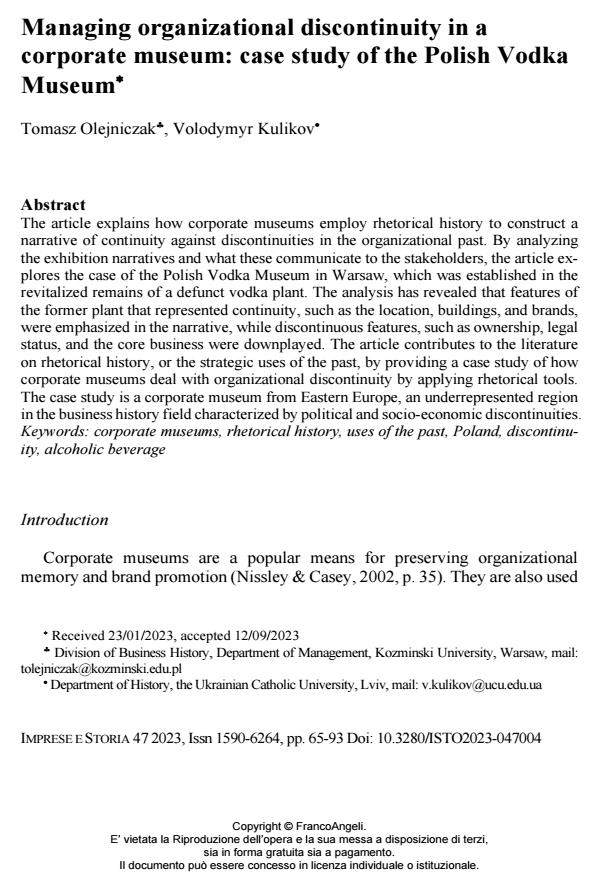Managing organizational discontinuity in a corporate museum: case study of the Polish Vodka Museum
Journal title IMPRESE E STORIA
Author/s Tomasz Olejniczak, Volodymyr Kulikov
Publishing Year 2024 Issue 2023/47
Language English Pages 29 P. 65-93 File size 411 KB
DOI 10.3280/ISTO2023-047004
DOI is like a bar code for intellectual property: to have more infomation
click here
Below, you can see the article first page
If you want to buy this article in PDF format, you can do it, following the instructions to buy download credits

FrancoAngeli is member of Publishers International Linking Association, Inc (PILA), a not-for-profit association which run the CrossRef service enabling links to and from online scholarly content.
The article explains how corporate museums employ rhetorical history to construct a narrative of continuity against discontinuities in the organizational past. By analyzing the exhibition narratives and what these communicate to the stakeholders, the article ex- plores the case of the Polish Vodka Museum in Warsaw, which was established in the revitalized remains of a defunct vodka plant. The analysis has revealed that features of the former plant that represented continuity, such as the location, buildings, and brands, were emphasized in the narrative, while discontinuous features, such as ownership, legal status, and the core business were downplayed. The article contributes to the literature on rhetorical history, or the strategic uses of the past, by providing a case study of how corporate museums deal with organizational discontinuity by applying rhetorical tools. The case study is a corporate museum from Eastern Europe, an underrepresented region in the business history field characterized by political and socio-economic discontinuities.
Keywords: corporate museums, rhetorical history, uses of the past, Poland, discontinuty, alcoholic beverage
- Introducing corporate museums to teach public memory and organizational rhetoric Joe Edward Hatfield, in Communication Teacher /2025 pp.1
DOI: 10.1080/17404622.2025.2540048
Tomasz Olejniczak, Volodymyr Kulikov, Managing organizational discontinuity in a corporate museum: case study of the Polish Vodka Museum in "IMPRESE E STORIA" 47/2023, pp 65-93, DOI: 10.3280/ISTO2023-047004